 Your new post is loading...
 Your new post is loading...
Worldometer is run by an international team of developers, researchers, and volunteers with the goal of making world statistics available in a thought-provoking and time relevant format to a wide audience around the world. Worldometer is owned by Dadax, an independent company. We have no political, governmental, or corporate affiliation.
Trusted Authority
Worldometer was voted as one of the best free reference websites by the American Library Association (ALA), the oldest and largest library association in the world.
We have licensed our counters at the United Nations Conference on Sustainable Development (Rio+20), to BBC News, and to the U2 concert, among others.
Worldometer is cited as a source in over 10,000 published books, in more than 6,000 professional journal articles, and in over 1000 Wikipedia pages. Learn more / En savoir plus / Mehr erfahren: https://www.scoop.it/t/21st-century-learning-and-teaching/?&tag=Big+Data.
Via Gust MEES
Big data analytics is the process of examining large and varied data sets to uncover hidden patterns, unknown correlations, market trends, customer preferences and other useful information that can help organizations make more-informed business decisions. Big data can be analysed for insights that lead to better decisions and strategic business moves. The Big Data market is expected to grow to $66.79 Billion by 2021, with investment in analytics hardware, software, services and data scientists pouring in.
WHAT ARE THE INFLUENCERS SAYING? Learn more / En savoir plus / Mehr erfahren: https://www.scoop.it/t/21st-century-learning-and-teaching/?&tag=Big+Data...
Via Gust MEES
Big Data is powerful on its own. So is artificial intelligence. What happens when the two are merged?
Big data is moving to a new stage of maturity — one that promises even greater business impact and industry disruption over the course of the coming decade. As big data initiatives mature, organizations are now combining the agility of big data processes with the scale of artificial intelligence (AI) capabilities to accelerate the delivery of business value. Big Data and AI at MetLife Pete Johnson is one of the most experienced executives working in the field of big data and AI within industry today. Having worked in the field of artificial intelligence for a generation dating back to his academic career at Yale University, Johnson now leads big data and AI initiatives as a fellow at MetLife. Johnson previously held positions as senior vice president for Strategic Technology with Mellon Bank and served as the executive vice president and chief technology officer of Cognitive Systems Inc. (CSI), an early artificial intelligence company specializing in natural language processing, expert systems, case-based reasoning, and data mining. CSI was founded by several members of the Yale University faculty in 1981, when Johnson completed his MS in computer science. Johnson, whom I’ve known for over a decade, is a regular participant in a series of executive thought-leadership breakfasts that I host for senior industry executives to share perspectives on topics in big data, AI, and machine learning among their peers. Participants in the most recent executive breakfasts have included chief data officers, chief analytics officers, chief digital officers, chief technology officers, and heads of big data for firms including AIG, American Express, Blackrock, Charles Schwab, CitiGroup, General Electric (GE), MetLife, TD Ameritrade, VISA, and Wells Fargo, among others. As a long-suffering expert in the field of artificial intelligence, Johnson observes three critical ways in which big data is now empowering AI: Big data technology — We have the ability now to process huge quantities of data that previously required extremely expensive hardware and software, or “commodity parallelism.”Availability of large data sets — ICR, transcription, voice and image files, weather data, and logistics data are now available in ways that were never possible in the past; even old “paper sourced” data is coming online.Machine learning at scale — “Scaled up” algorithms such as recurrent neural networks and deep learning are powering the breakthrough of AI. Learn more / En savoir plus / Mehr erfahren: https://www.scoop.it/t/21st-century-learning-and-teaching/?&tag=AI https://www.scoop.it/t/21st-century-innovative-technologies-and-developments/?&tag=AI https://www.scoop.it/t/21st-century-learning-and-teaching/?&tag=machine+learning https://www.scoop.it/t/21st-century-learning-and-teaching/?&tag=Deep+Learning
Via Gust MEES
The concept of Big Data is a relatively new one. It denotes the availability of vast volumes and sources of data, which were not available before. By itself, Big Data is powerful, and when combined with Artificial Intelligence and machine learning, the opportunities presented by this combination are just endless. As big data moves to the maturity phase, firms are now looking for ways to combine the scale of AI and the agility of Big Data processes to bring about an acceleration on the delivery of the much-needed business value.
The Power of Combining AI and Big Data
Most businesses are data-driven. As a result, firms with the right type and quantity of data has the upper hand over rivals. Convergence between AI and big data is promising. Firms can now access large volumes of broken down and categorized data by their usefulness. Traditional computer processors cannot process big data. Big data can best be processed by a GPU database, which has the flexibility needed to handle a significant amount of data of different types. Learn more / En savoir plus / Mehr erfahren: https://www.scoop.it/t/21st-century-learning-and-teaching/?&tag=AI https://www.scoop.it/t/21st-century-innovative-technologies-and-developments/?&tag=AI https://www.scoop.it/t/21st-century-learning-and-teaching/?&tag=Big+Data...
Via Gust MEES
|
Everyday, there are 4 million blog posts, 100,000 news articles and 500,000 hours of video published on the Internet. A wealth of information and knowledge. A wealth of information and knowledge that is lost for most companies, at least for the most part.
Lost?
Step 1: content curation
Not entirely. Thanks to content curation technology, the Web can now be filtered. With content curation tools and platforms such as Scoop.it (among others of course), we can use more or less sophisticated ways to filter this huge amount of content that is published daily to zoom in on what matters to us. Good content curation technology is essential. It saves people a huge amount of time looking for content to share for marketing purposes or information that helps their organization make better decisions. And perhaps as importantly, without these filters, we would just be able to search – not discover. We would still find answers to what we don’t know but we wouldn’t know what we don’t know.
But until recently, all the solutions we’ve offered to deal with information overload – ours included – have revolved around the same basic idea: more – or more sophisticated – filters. Learn more / En savoir plus / Mehr erfahren: https://www.scoop.it/t/21st-century-learning-and-teaching/?&tag=Curation
Via Gust MEES
Big data analytics can play a crucial role in helping patients get healthcare at a lower cost.
Today, healthcare costs are much higher than they should be and have been growing steadily over the past 20 years. In fact, according to a study by McKinsey, healthcare expenses represent nearly 17.6% of United States’ GDP. Due to the rising cost of healthcare, it’s time to look at smart, data-driven ideas.
From autonomous cars to Internet of Things, big data has percolated almost every industry. It’s no surprise that the healthcare industry, with its large amount of data, is on the verge of big data-driven transformation, perhaps more than any other field.
Healthcare analytics has the potential to reduce treatment costs, predict outbreak of epidemics as well as preventable diseases and improve the quality of life. Here are 5 examples of how big data analytics in healthcare can help save lives. Learn more / En savoir plus / Mehr erfahren: https://www.scoop.it/t/21st-century-learning-and-teaching/?&tag=Big+Data...
Via Gust MEES
السّلام عليكم ورحمة الله وبركةه SEMANTICS Lecture : Dian, S.Pd., M.Pd. 2. SYAIMA FAUZIYAH ANWARI Definition of SEMANTICS and The Study Word Meanings3. Definition of SEMANTICS What is semantics?4. What is Semantics? • The study of meaning of words, phrases, and sentences. – Lexical semantics (words and meaning relationship among words) – Phrasal/ sentential semantics (syntactic units larger than a word) • What a speaker conventionally means (objective or general meaning)- not what he is trying to say (subjective or local meaning)5. Semantics is a sub discipline of linguistics which focuses on the study of meaning. Semantics tries to understand what meaning is as an element of language and how it is constructed by language as well as interpreted, obscured and negotiated by speakers and listeners of language.6. How can we describe the meaning of different words? • Three types of semantic analysis: –Words as ‘containers’ Semantic features – ‘roles’ they fulfill Semantic roles – ‘relationship’ with other words lexical relation7. Semantic features • Syntactically correct sentences but semantically odd. – The hamburger ate the man. – My cat studies linguistics. – The table listens to the radio • This relates to the conceptual components of the words ‘hamburger, cat & table’ not human.8. Semantic Features • Semantic properties: The components of meaning of a word. • Meaning as collection of properties/features typically with two possible values (+ / -) • Example of componential analysis: baby is [+ young], [+ human], [+animate]and so on... Learn more / En savoir plus / Mehr erfahren: https://www.scoop.it/t/21st-century-learning-and-teaching/?&tag=Semantic-Web
Via Gust MEES
Der Markenname ist ein 2013 von Apple Inc. eingeführter, proprietärer Standard für Navigation in geschlossenen Räumen, basierend auf Bluetooth Low Energy (BLE). Das Verfahren wird ab iOS 7 bzw. Android Version 4.3 unterstützt und kann somit ab dem iPhone 4S, iPad (dritte Generation) und iPod Touch (fünfte Generation) sowie aktuellen Android-Geräten genutzt werden.
|



 Your new post is loading...
Your new post is loading...

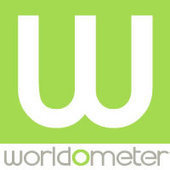

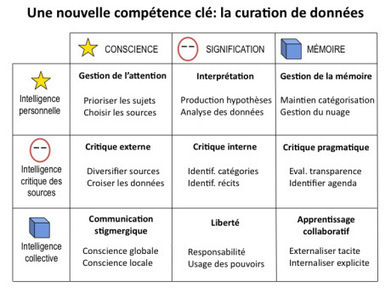

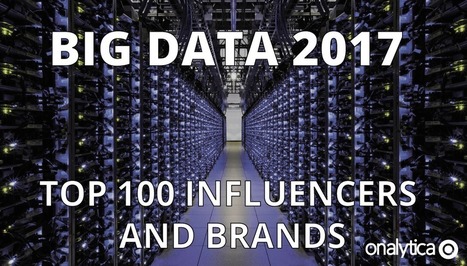


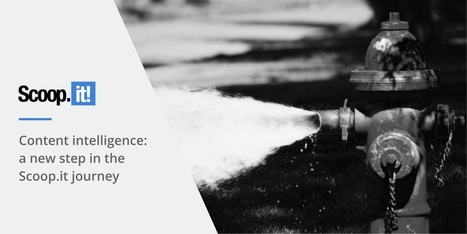
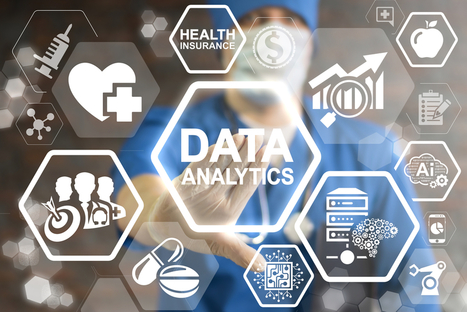






Worldometer is run by an international team of developers, researchers, and volunteers with the goal of making world statistics available in a thought-provoking and time relevant format to a wide audience around the world. Worldometer is owned by Dadax, an independent company. We have no political, governmental, or corporate affiliation.
Trusted Authority
Worldometer was voted as one of the best free reference websites by the American Library Association (ALA), the oldest and largest library association in the world.
We have licensed our counters at the United Nations Conference on Sustainable Development (Rio+20), to BBC News, and to the U2 concert, among others.
Worldometer is cited as a source in over 10,000 published books, in more than 6,000 professional journal articles, and in over 1000 Wikipedia pages.
Learn more / En savoir plus / Mehr erfahren:
https://www.scoop.it/t/21st-century-learning-and-teaching/?&tag=Big+Data.